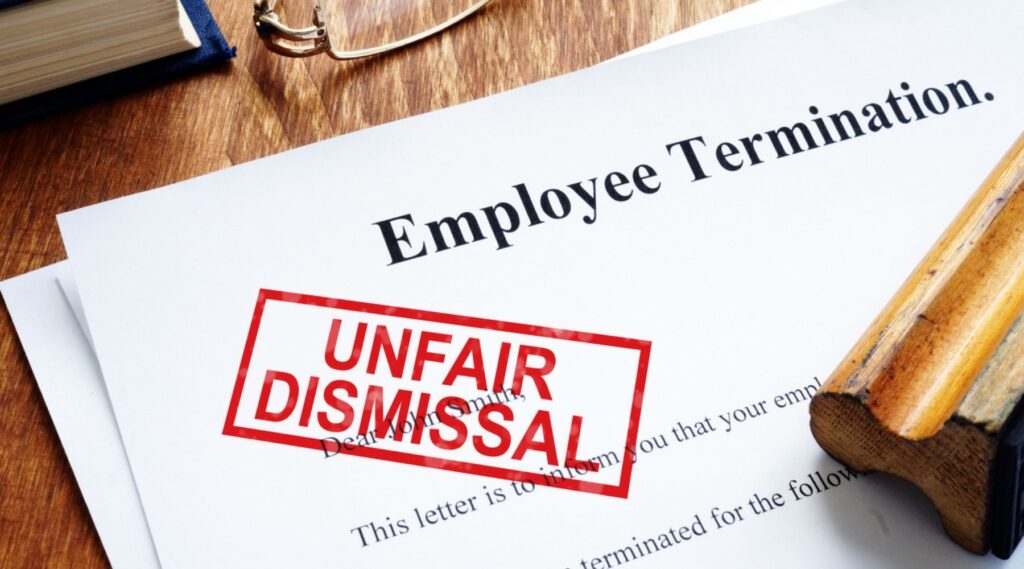
Terminating an employee is rarely simple. Even when the facts seem clear-cut, one misstep in the process can leave employers open to serious legal consequences. In California, the risks of wrongful termination are especially high. While it’s often assumed that “at-will employment” gives companies broad authority to let employees go at any time, the reality is more complicated.
Wrongful termination claims are rising in California, and recent changes in state law make it more important than ever for employers to tread carefully. If your policies aren’t buttoned up, and your documentation doesn’t support your decisions, you may find yourself on the losing end of a claim you never expected.
Let’s walk through what’s changed, what counts as wrongful termination, and how employers can take action now to avoid a costly mistake later.





California is an at-will employment state, which means employers can terminate employees at any time, for any reason, or no reason at all, as long as the reason isn’t illegal. That last part is key.
Over time, courts and lawmakers have carved out a wide range of exceptions to at-will employment. These include:
In other words, just because an employee works at-will doesn’t mean their job can be terminated without scrutiny.
One of the most important updates to wrongful termination risks in California went into effect in January 2024 under SB 497: the rebuttable presumption of retaliation.
Here’s what that means in practice: If an employee is fired within 90 days of engaging in a protected activity (like reporting safety violations or filing a harassment complaint), the law now presumes the termination was retaliatory. It’s then up to the employer to prove that it wasn’t. In other words, an employee used to have to prove that the termination WAS retaliatory and now the employer has to defend that it was NOT retaliatory.
That’s a heavy burden to carry unless your documentation is rock solid.
This shift in the legal framework makes proactive HR practices essential. It’s no longer enough to simply avoid discriminatory motives. You now need a clear, written record of decisions, performance concerns, and policy enforcement to demonstrate that the termination was fair, consistent, and based on legitimate business reasons.
While every case is different, many wrongful termination claims stem from patterns that are easy to overlook in the moment. A few examples:
These cases often hinge on inconsistent enforcement. If two employees break the same rule and only one is fired—and that person is in a unique “protected class” — you’ve got a potential legal problem. A protected class is a demographic characteristic of a person, such as race, national origin, military status, marital status, religion, etc. Employers cannot base employment decisions on protected classes.

Firing someone is never fun, but it should always follow a clear, documented process. A few key best practices:
If one employee gets written up for tardiness, all others should, too. Playing favorites (or looking the other way for certain staff) can unravel your defense in court.
Keep performance reviews, disciplinary notes, emails, and written warnings. These records should clearly show why the termination occurred and how the employee was given opportunities to improve.
Many lawsuits begin with a manager saying the wrong thing, reacting emotionally, or failing to follow internal procedures. Regular training can reduce those risks significantly.
Laws around employee rights are constantly evolving in California. The rebuttable presumption of retaliation is one example, but it won’t be the last. Work with HR counsel to keep your policies compliant.
Offering a severance package in exchange for a signed release can help reduce your legal exposure, but only when done correctly. In California, these agreements must be carefully worded and can’t ask employees to waive certain rights, like the right to unemployment, workers’ compensation, or, in the case of people 40 years of age or older, 21 days to review the agreement and seven days to revoke their signature.
Employers should avoid cookie-cutter severance templates. Have professional counsel review any agreement to ensure it complies with both state and federal laws, particularly the Older Workers Benefit Protection Act (OWBPA) and California-specific requirements.
If your goal is to terminate employment without triggering legal action, the process matters as much as the reason. A few questions to ask before initiating a termination:
Sometimes, companies rush to act on emotion, especially in high-stress situations. Maybe someone made a disrespectful comment in a meeting or botched a client project. While frustration is natural, termination decisions made in haste are risky.
Take a beat, gather the facts, and follow protocol.
Wrongful termination claims rank among the most avoidable legal risks for employers, but good intentions alone aren’t enough. Success requires clear, enforceable policies, solid documentation, and a fair, consistent process that respects employees, whether they’re excelling or exiting.
At Next Level Strategies, we help California businesses confidently navigate these challenges. If you’re unsure whether your termination procedures truly protect you, it’s time for a closer look. In California, the benefit of the doubt doesn’t always go to the employer.
Reach out today by filling out the form below or calling 415-876-NEXT, and let us help you build stronger, safer workplace practices.
Reach out to our team of HR experts today!
A termination is wrongful if it violates laws prohibiting discrimination, retaliation, breach of contract, or public policy protections.
Employers should follow clear, documented policies, avoid illegal reasons for termination, and maintain fair, consistent procedures.
Employees may be entitled to lost wages, emotional distress damages, punitive damages, and sometimes reinstatement or attorney’s fees.